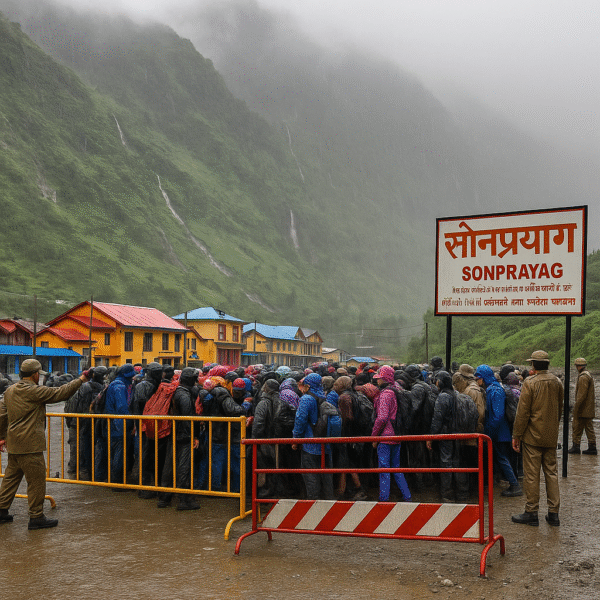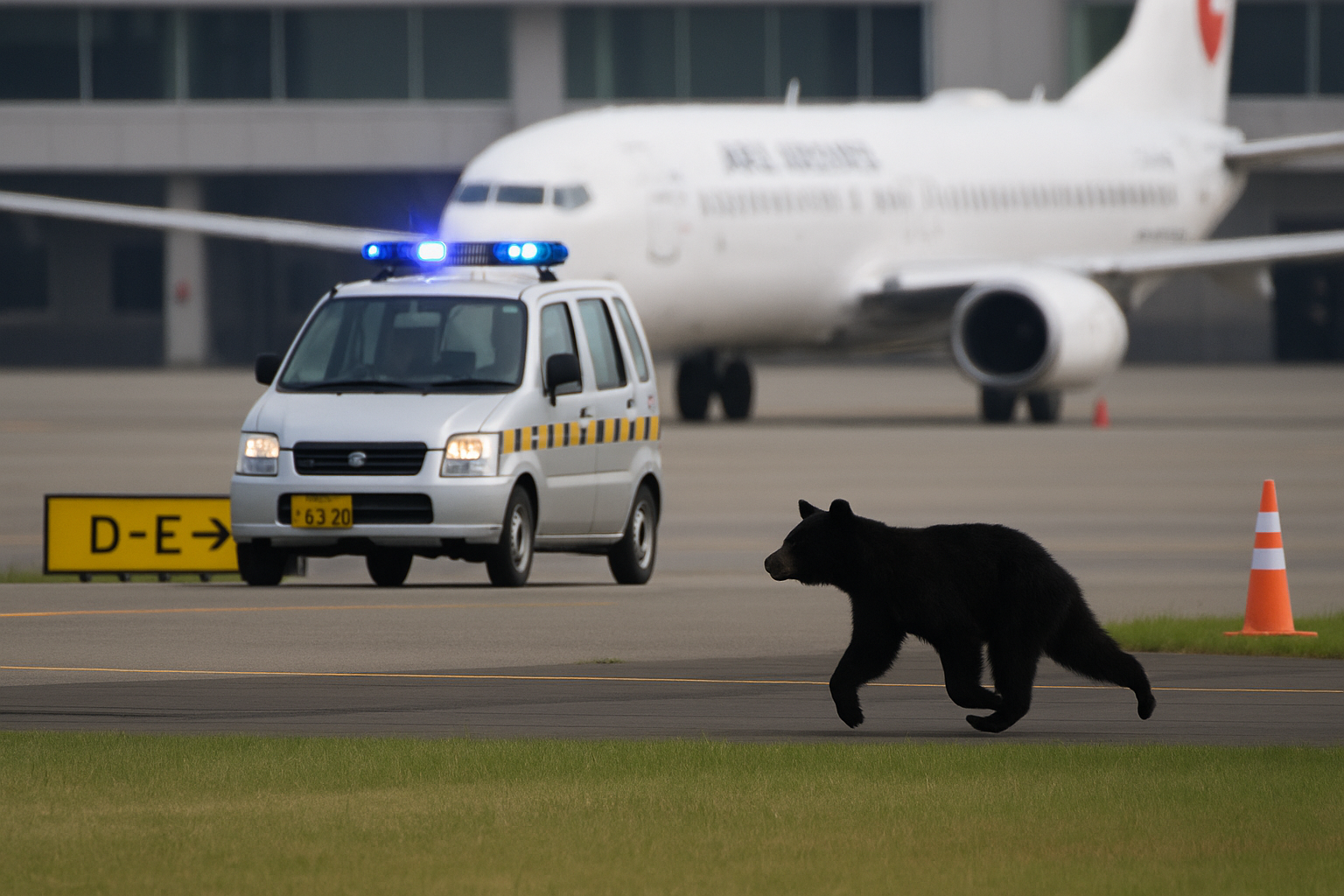In an unprecedented disruption to Japan’s aviation system, a Japanese black bear wandering across the runway at Yamagata Airport caused the cancellation of 12 scheduled flights on Thursday, June 27, 2025, leading to hours of lockdown, nationwide headlines, and renewed scrutiny over Japan’s increasing wildlife encounters in urbanized zones.
The unexpected incident unfolded early in the morning when airport personnel spotted the bear roaming near the runway. Air traffic controllers immediately grounded all operations to ensure the safety of passengers and crew. Despite initial efforts to drive the bear away using airport vehicles flashing blue warning lights, the animal re-emerged multiple times throughout the day—halting flight operations for hours.
By 6:30 p.m., operations finally resumed, with authorities confirming that the bear was no longer posing a threat. However, the hours-long drama affected travelers on routes to Tokyo, Osaka, Sapporo, Nagoya, and other major Japanese cities.
Emergency Response and Public Disruption
Akira Nagai, an official at Yamagata Airport, described the situation as “a complete stalemate,” stating, “We couldn’t resume operations until the bear was dealt with. Safety comes first.”
Police were deployed around the airport perimeter, while a team of hunters was called in to assist with capturing the animal. Although the bear was not immediately found, officials set up traps and scanned the surrounding forested area to ensure the creature didn’t re-enter the airport zone. No injuries were reported, but hundreds of passengers were left stranded for hours, many expressing a mix of amusement, concern, and frustration.
Not an Isolated Case: Rising Bear Sightings Across Japan
This alarming event is part of a growing trend in Japan, where bear encounters have become more frequent and dangerous. According to recent government statistics, 219 bear attacks were reported between April 2023 and April 2024, resulting in six fatalities. Experts warn that Japan is experiencing a sharp rise in human-wildlife conflict, especially involving bears.
The Japanese black bear, a subspecies of the Asiatic black bear, has traditionally inhabited remote mountain forests. However, deforestation, climate change, and rural depopulation have forced these animals to seek food in human-populated areas, including residential neighborhoods, farms, schools, and now, even airports.
Environmental and Demographic Shifts Fueling Encounters
Several factors are converging to create a “perfect storm” for these encounters:
- Climate disruptions have affected the availability of forest foods such as chestnuts, acorns, and wild fruits—key staples in a bear’s diet.
- Aging rural populations and ongoing urban migration have reduced traditional wildlife deterrent efforts like local hunting or maintenance of buffer zones.
- Forest conservation policies over the past decades have created rich, food-abundant habitats that ironically allow bear populations to thrive near urban edges.
In many rural towns, abandoned homes and unmonitored garbage disposal have created bear “entry points,” encouraging their migration into human territory.
Wildlife Management and Technological Innovations
In response to this growing crisis, Japanese authorities are reevaluating wildlife management policies. Some prefectures, like Toyama, have begun testing AI-powered bear detection systems. These systems analyze real-time surveillance footage to detect bear movements and immediately notify wildlife officers and local police.
The Ministry of the Environment has also relaxed some hunting restrictions to allow controlled culling in bear-heavy regions. However, conservationists remain divided. While some advocate population control, others argue for non-lethal methods, like relocating bears to deeper forests or creating natural barriers between wildlife habitats and human zones.
Koji Yamazaki, a wildlife ecology professor at the Tokyo University of Agriculture, commented, “We need a comprehensive strategy. That includes land-use planning, wildlife corridors, and public education—not just more hunting.”
Educational Campaigns and Community Preparedness
Local governments are now investing in awareness campaigns aimed at rural and suburban residents. These efforts include guidelines on:
- Proper garbage management to avoid attracting bears.
- Installing motion-activated lighting and alarms.
- Avoiding outdoor activity at dusk and dawn, especially during bear foraging seasons.
For areas near infrastructure like airports, schools, and hospitals, additional security protocols are being proposed—including perimeter fencing, motion sensors, and routine wildlife patrols.
The Aviation Industry’s Wake-Up Call
The incident at Yamagata Airport may be the first of its kind in Japan, but it highlights a broader vulnerability in transportation infrastructure exposed to wildlife intrusion. Open spaces like airport runways can become ideal roaming grounds for large animals, particularly in rural locations surrounded by forested terrain.
In response, the Japan Civil Aviation Bureau (JCAB) is reviewing wildlife mitigation strategies at regional airports, potentially mandating new guidelines for surveillance, rapid response training, and perimeter security enhancements.
Conclusion: A Warning and an Opportunity
The bear that paralyzed Yamagata Airport for an entire day has become a symbol of the growing tension between urban development and natural ecosystems. While no lives were lost and operations resumed safely, the incident exposed critical gaps in how Japan manages human-wildlife coexistence in an era of climate uncertainty and demographic change.
Balancing public safety and wildlife preservation requires a collaborative effort across government, conservationists, technologists, and local communities. As Japan looks to the future, it must invest in solutions that are not only reactive but proactive, ensuring that both people and animals can coexist safely in shared spaces.
The wild may be closer than ever—but so is the opportunity to rethink how we live with it.
For more travel news like this, keep reading Global Travel Wire
















